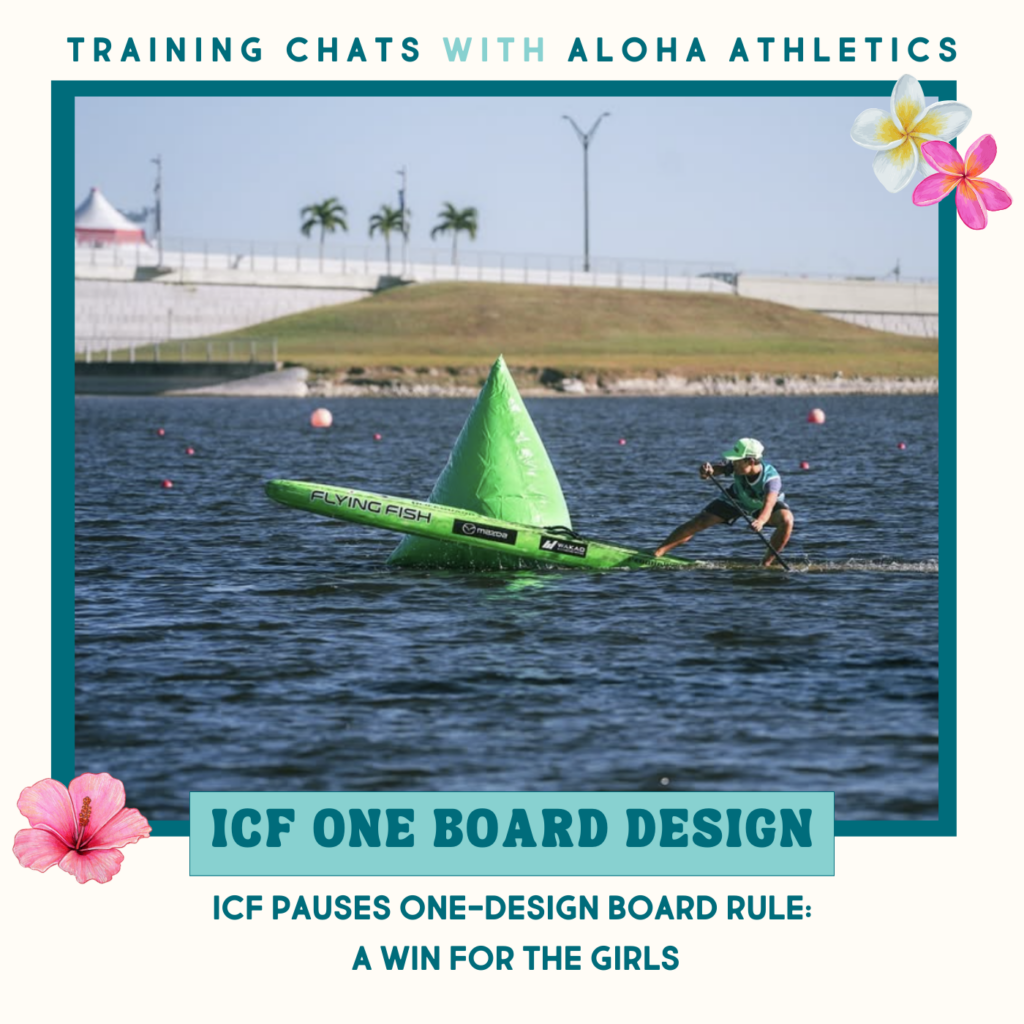ICF Pauses One-Design Board Mandate for 2025: A Win for Junior Paddlers, Especially Girls

Photo Credit: Matt Loutzenhiser @Matt_Loutz
In a significant update for the stand-up paddleboarding community, the ICF has announced a pause on the implementation of the one-design board mandate for junior competitors, originally set to take effect in 2025. This decision comes in response to widespread feedback from athletes, parents, coaches, and industry stakeholders, and represents a major win for young paddlers—especially girls, who often require lower-volume boards for optimal performance.
Background on the One-Design Mandate
The initial rule required all junior athletes (under 18) to compete on a standardized 14-foot hard board that meets criteria not yet defined by the ICF. The primary goal was to enhance accessibility for young athletes. The ICF believed that by providing uniform boards, they could level the playing field and encourage broader participation among juniors.
However, this approach overlooked key concerns about performance, body size differences, and accessibility, particularly for female paddlers
Why This Decision is a Win for Girls
One of the biggest concerns with the one-design rule was that a single board shape and volume would not suit all paddlers, especially female athletes. Many girls in the junior division benefit from lower-volume boards that better match their body weight, allowing for better control, speed, and efficiency. On average, boys tend to weigh more than girls, primarily due to differences in height, muscle mass and bone density,
A board that is too high-volume can:
- Sit too high on the water, making it difficult to generate power.
- Lead to a competitive disadvantage
By pausing this rule, the ICF is allowing junior athletes—including many female paddlers—to continue using boards that fit their individual body types and paddling styles. This decision ensures that girls can remain competitive without being forced onto equipment that may hinder their performance.
The Power of Advocacy
This decision is a direct result of athlete and community advocacy. When the one-design rule was announced, the SUP community responded with strong opposition from athletes, parents, coaches, and industry leaders. The key points of pushback included:
- The lack of input from athletes before the rule was implemented.
- Concerns that a one-design board would discourage participation rather than increase it.
- The recognition that SUP is a highly individual sport, where equipment choice plays a major role in performance.
Rather than accepting the rule, the SUP community spoke out on social media, in discussions with the ICF, and through public discourse. This collective voice forced the ICF to reconsider and ultimately pause the mandate. This shows the importance of advocacy in shaping the future of our sport. When athletes and stakeholders come together to voice concerns, governing bodies are more likely to listen and adjust policies that may not serve the best interests of the community. As a community we must continue to work together and advocate towards what we believe in. We won’t always agree but it’s the act of speaking up that matters.
The Future of Equipment Standardization in SUP
The ICF’s willingness to pause the one-design board policy shows its commitment to listening to the SUP community and adapting its regulations accordingly. However, this discussion is far from over. The ICF will revisit the idea of equipment standardization in the future, so it will be crucial for athletes, coaches, and brands to stay engaged in the conversation. This moment serves as a reminder that rules in competitive sports should evolve with the input of those directly impacted. The SUP community has proven that when it advocates for fair and thoughtful policies, change is possible.
With Aloha,
Lindsey
April 4, 2025
Aloha
We are Lindsey tilton & casey Mccullough
the team behind Aloha Athletics. Our mission is to empower paddlers of all levels and foster a vibrant, supportive community on and off the water. Lindsey is an endurance athlete and mindset coach passionate about helping others push boundaries. With a background in marathon running and yoga, she blends physical strength with mental focus to help paddlers achieve their goals. Casey is a lifelong athlete with 3 professional skimboarding world championships and the 2021 Crossing for Cystic Fibrosis overall solo champion title. A nutrition and dietetics expert, she’s passionate about helping others thrive by prioritizing mind and body health.
train with us
Transform your paddling experience with expert guidance and customized workouts.
Our holistic approach encompasses technique, speed, power, endurance, and efficiency. Elevate your paddling game with a blend of yoga for flexibility, strength training for power, and mindset training for focus. Join a supportive community, track your progress, and conquer the water with confidence.